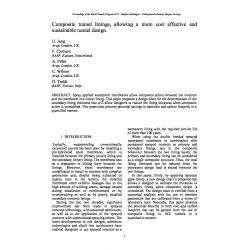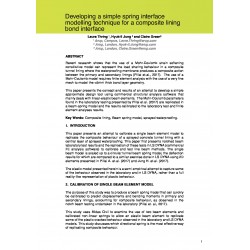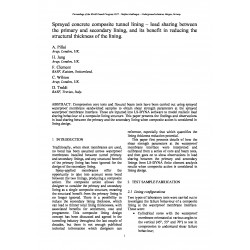No document
Search & filter
Search for a publication
Search & filter
List of products by author: H. Jung
-
Composite shell lining design analytical study of interface
Abstract: Traditionally, no bond has been assumed across waterproof membranes installed between primary and secondary tunnel linings. Spray-applied membranes offer the opportunity to consider some bond between the two linings, producing a composite action. The composite action has been verified through a significant laboratory testing programme from research from Pillai et.al. (2017)1 and an analytical...
0,00 € -
Composite tunnel linings, allowing a more cost effective and sustainable tunnel design
Abstract: Spray applied waterproof membranes allow composite action between the concrete and the membrane in a tunnel lining. This paper proposes a design chart for the determination of the secondary lining thickness that will allow designers to reduce the lining thickness when composite action is considered. This paper also presents potential savings in materials and carbon footprint in a quantified...
0,00 € -
Developing a simple spring interface modelling technique for a composite lining bond interface
Abstract: Recent research shows that the use of a Mohr-Coulomb strain softening constitutive model can represent the load sharing behaviour in a composite tunnel lining where the waterproofing membrane produces a composite action between the primary and secondary linings (Pillai et.al., 2017). The use of a Mohr-Coulomb model requires finite element analysis with the use of a very fine mesh to model the
0,00 € -
Sprayed concrete composite tunnel lining – load sharing between the primary and secondary lining, and its benefit in...
Abstract: Compression core tests and flexural beam tests have been carried out using sprayed waterproof membrane sandwiched samples to obtain shear strength parameters at the sprayed waterproof membrane interface. These are inputted into LS-DYNA software to model realistic load sharing behaviour of a composite lining structure. This paper presents the findings and observations in load sharing between the...
0,00 €




